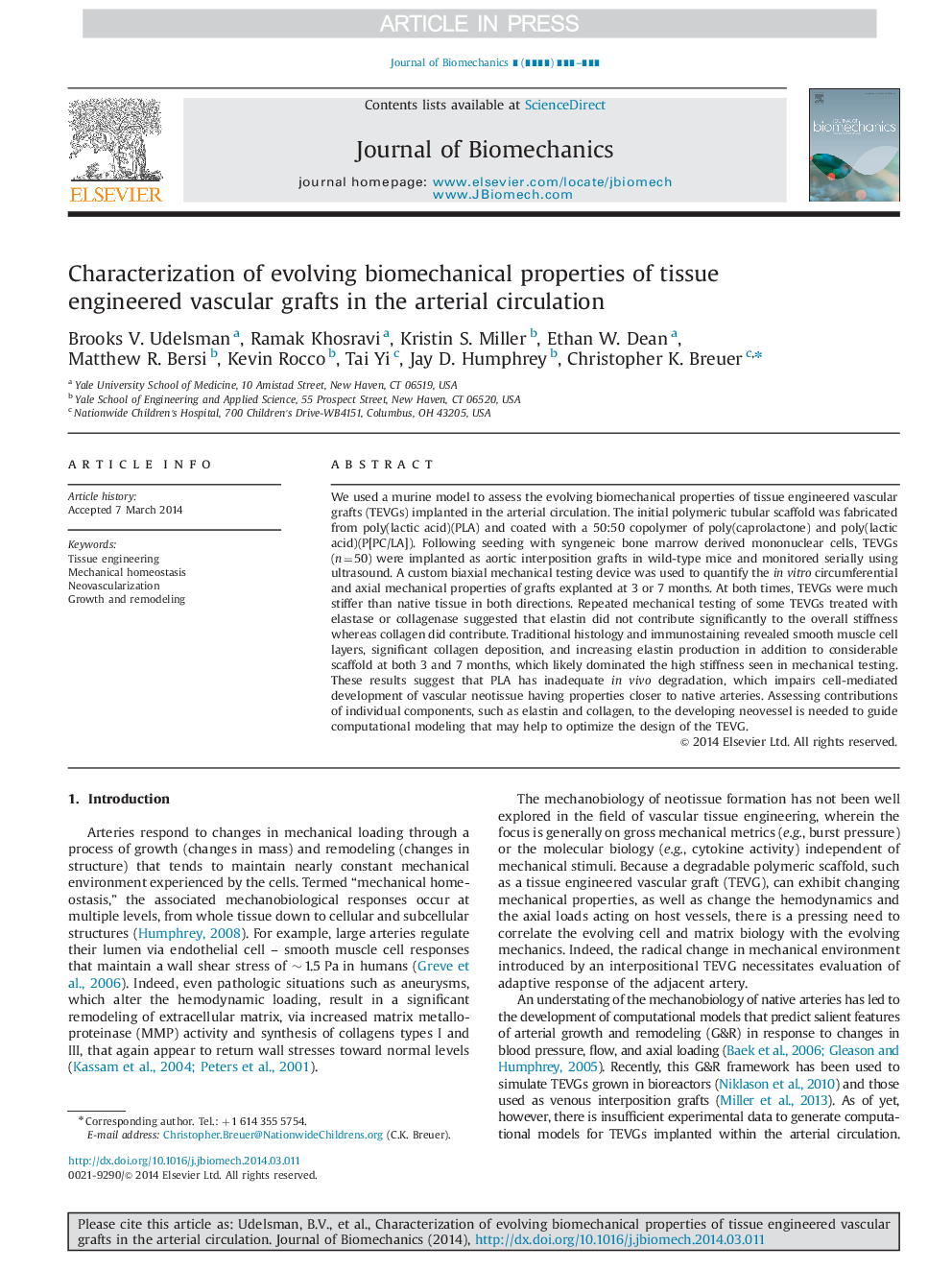| Article ID | Journal | Published Year | Pages | File Type |
|---|---|---|---|---|
| 10432068 | Journal of Biomechanics | 2014 | 10 Pages |
Abstract
We used a murine model to assess the evolving biomechanical properties of tissue engineered vascular grafts (TEVGs) implanted in the arterial circulation. The initial polymeric tubular scaffold was fabricated from poly(lactic acid)(PLA) and coated with a 50:50 copolymer of poly(caprolactone) and poly(lactic acid)(P[PC/LA]). Following seeding with syngeneic bone marrow derived mononuclear cells, TEVGs (n=50) were implanted as aortic interposition grafts in wild-type mice and monitored serially using ultrasound. A custom biaxial mechanical testing device was used to quantify the in vitro circumferential and axial mechanical properties of grafts explanted at 3 or 7 months. At both times, TEVGs were much stiffer than native tissue in both directions. Repeated mechanical testing of some TEVGs treated with elastase or collagenase suggested that elastin did not contribute significantly to the overall stiffness whereas collagen did contribute. Traditional histology and immunostaining revealed smooth muscle cell layers, significant collagen deposition, and increasing elastin production in addition to considerable scaffold at both 3 and 7 months, which likely dominated the high stiffness seen in mechanical testing. These results suggest that PLA has inadequate in vivo degradation, which impairs cell-mediated development of vascular neotissue having properties closer to native arteries. Assessing contributions of individual components, such as elastin and collagen, to the developing neovessel is needed to guide computational modeling that may help to optimize the design of the TEVG.
Related Topics
Physical Sciences and Engineering
Engineering
Biomedical Engineering
Authors
Brooks V. Udelsman, Ramak Khosravi, Kristin S. Miller, Ethan W. Dean, Matthew R. Bersi, Kevin Rocco, Tai Yi, Jay D. Humphrey, Christopher K. Breuer,
